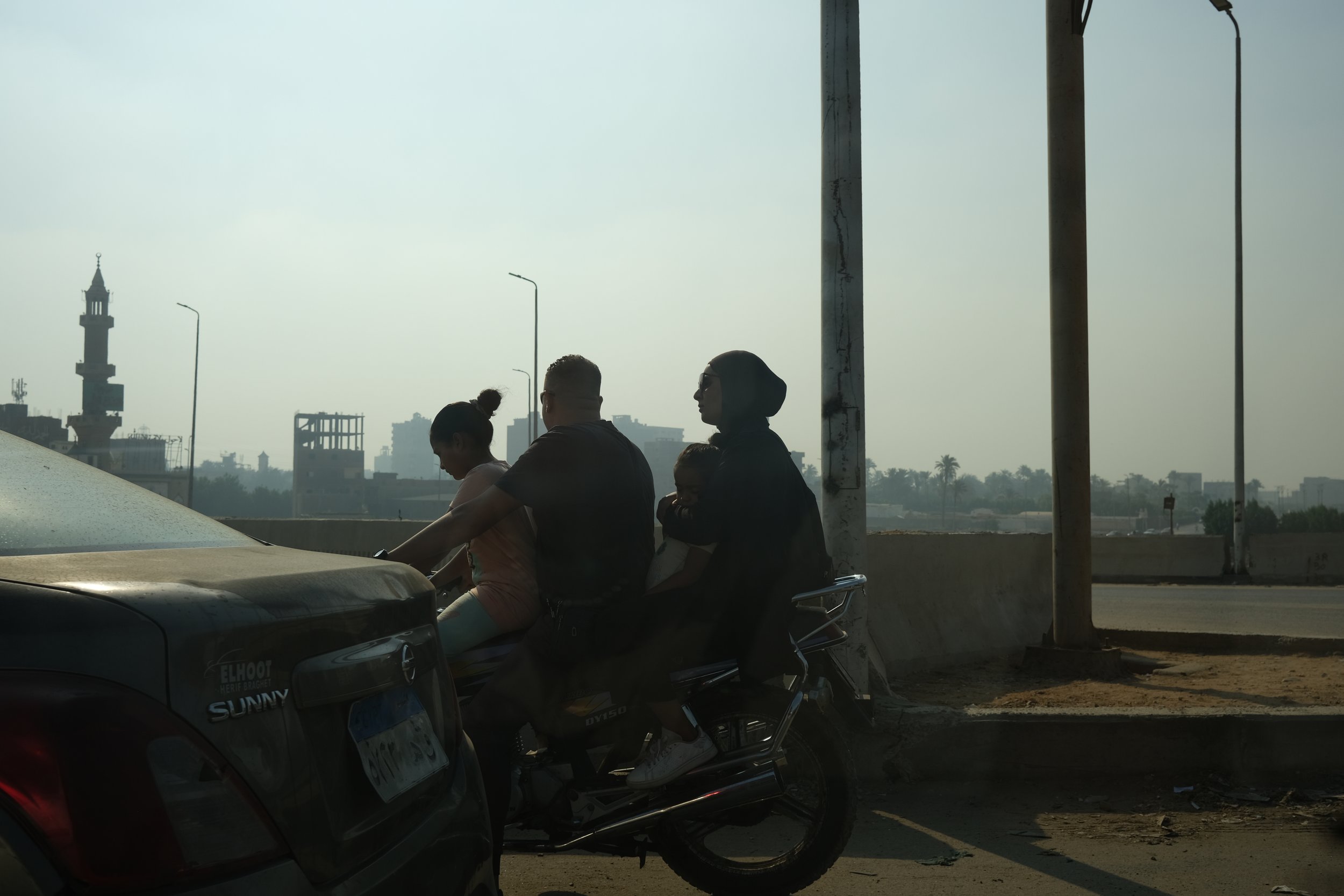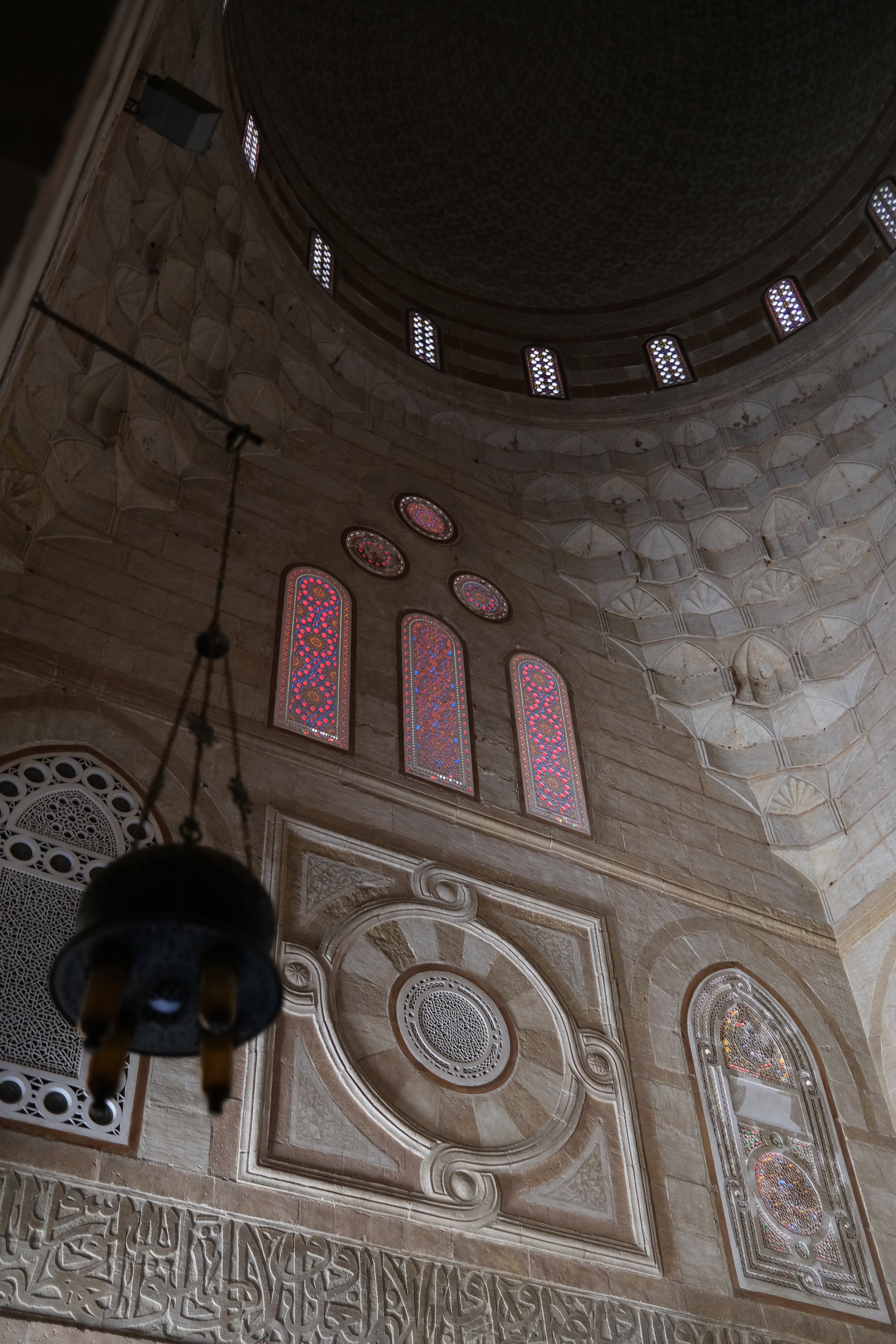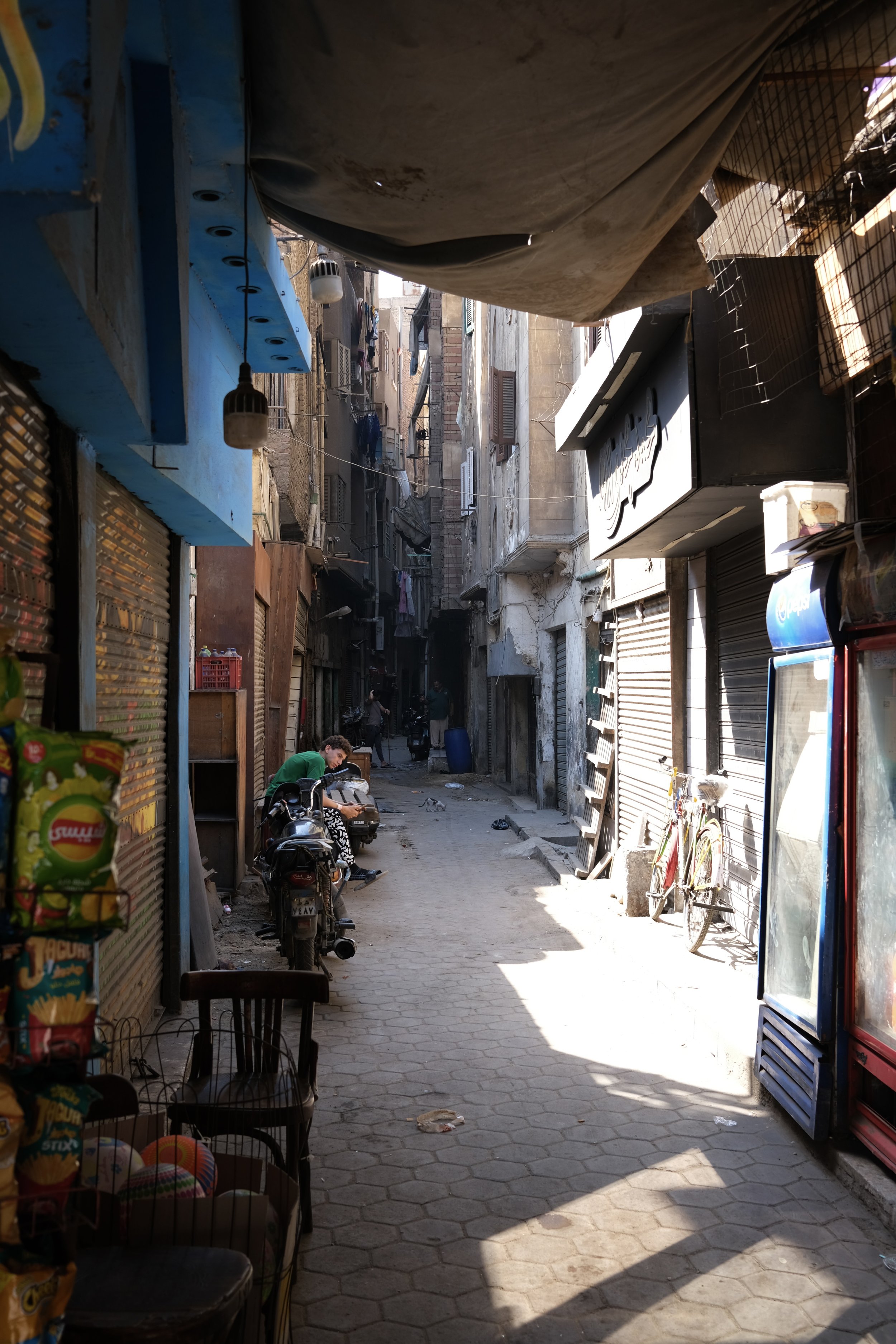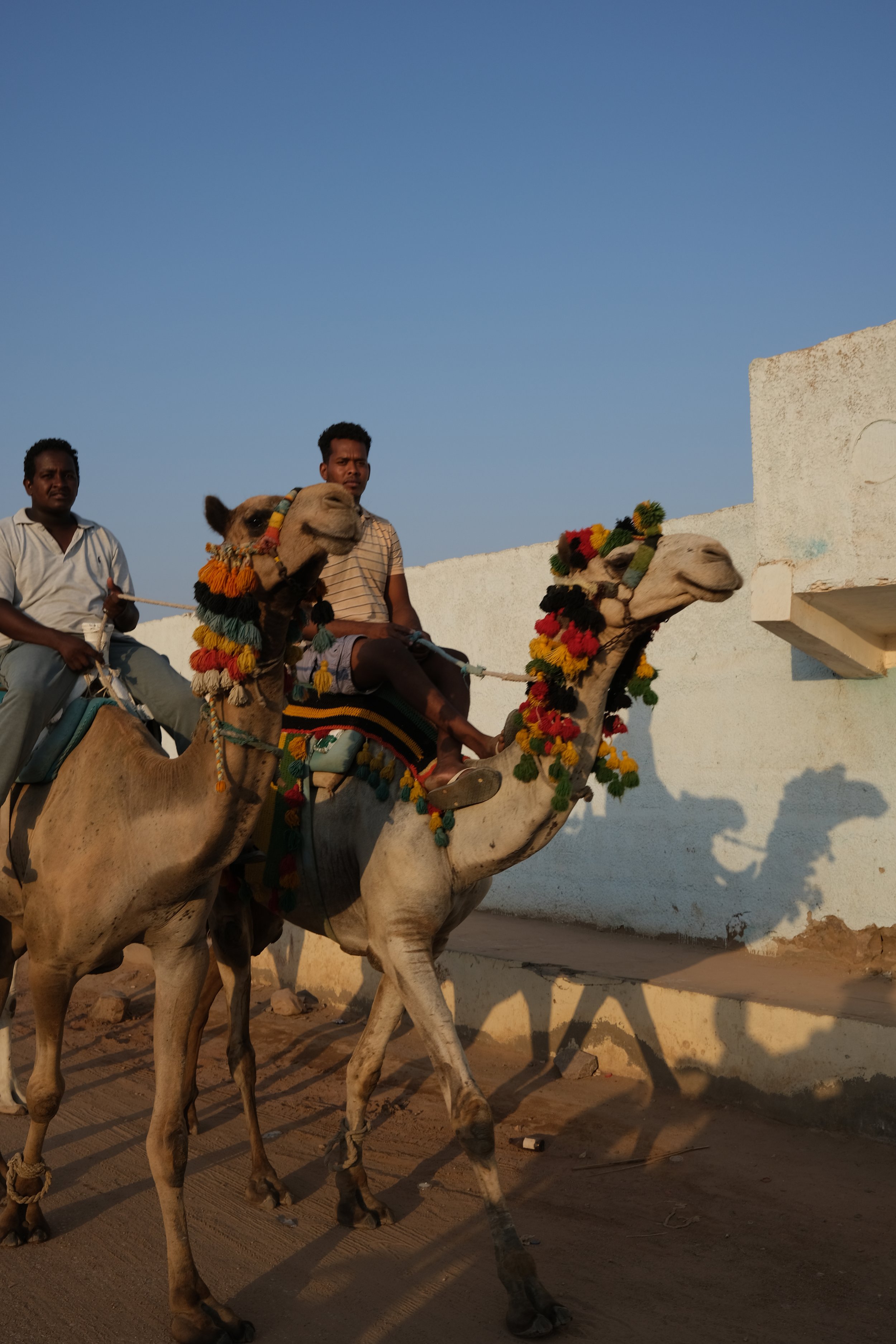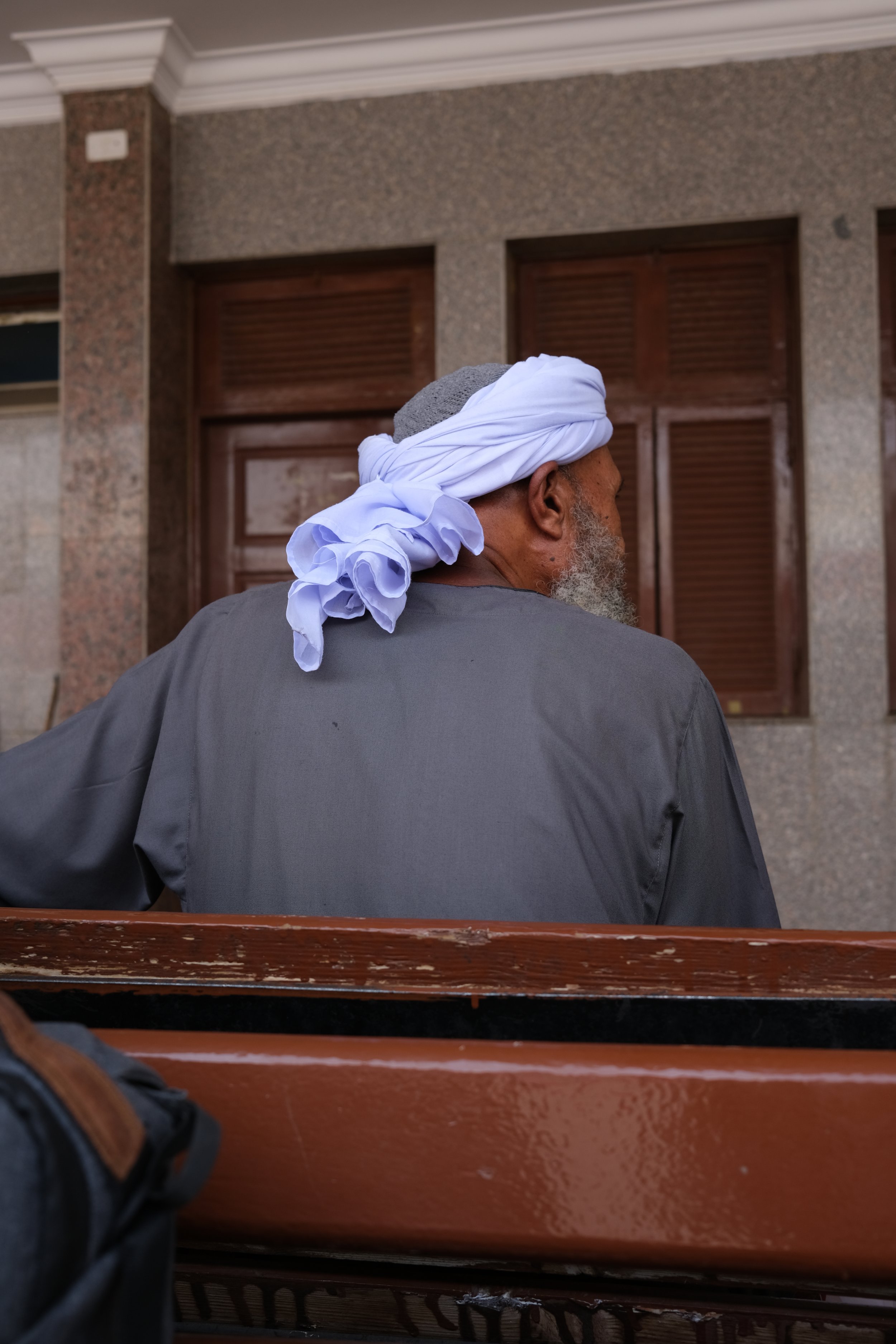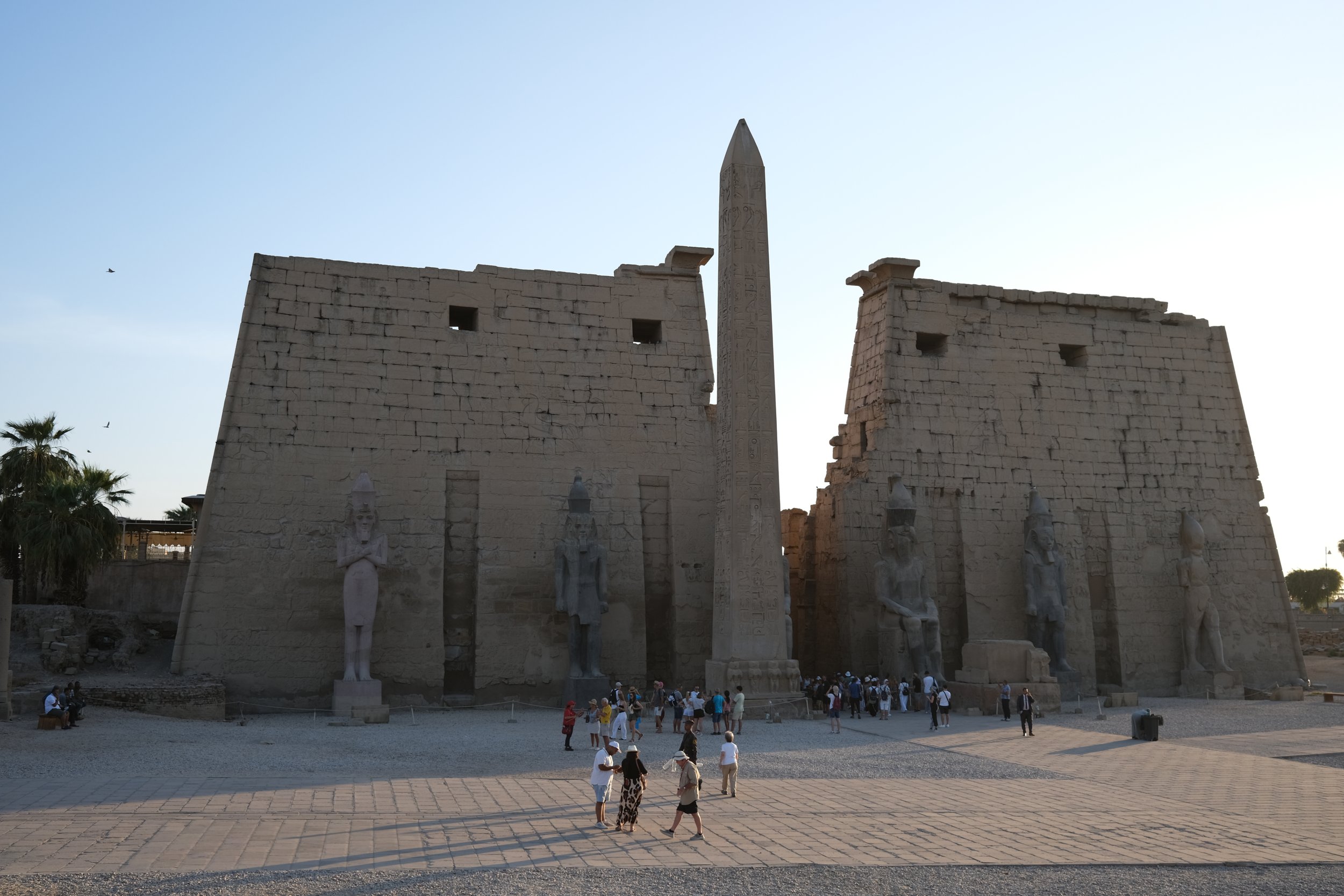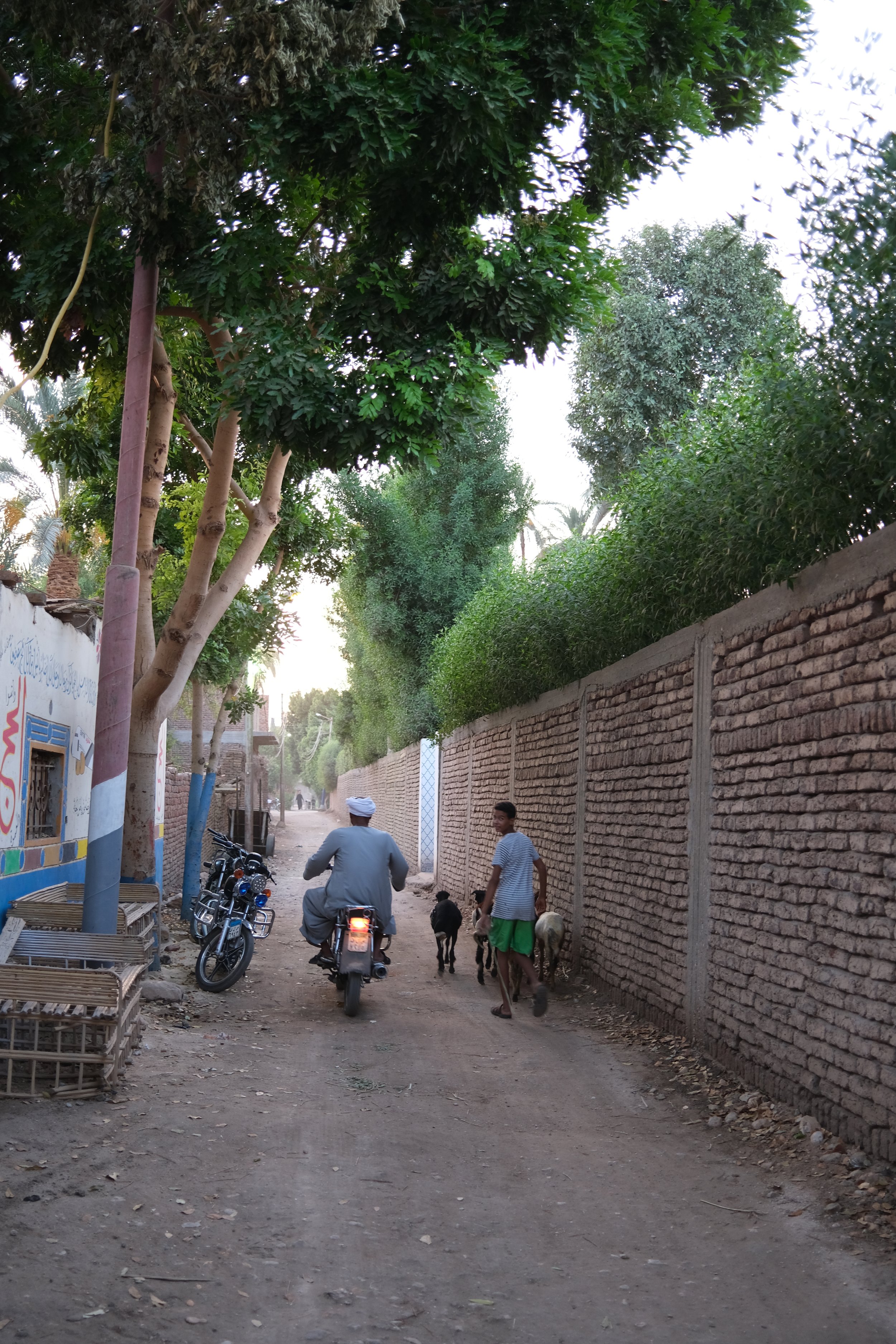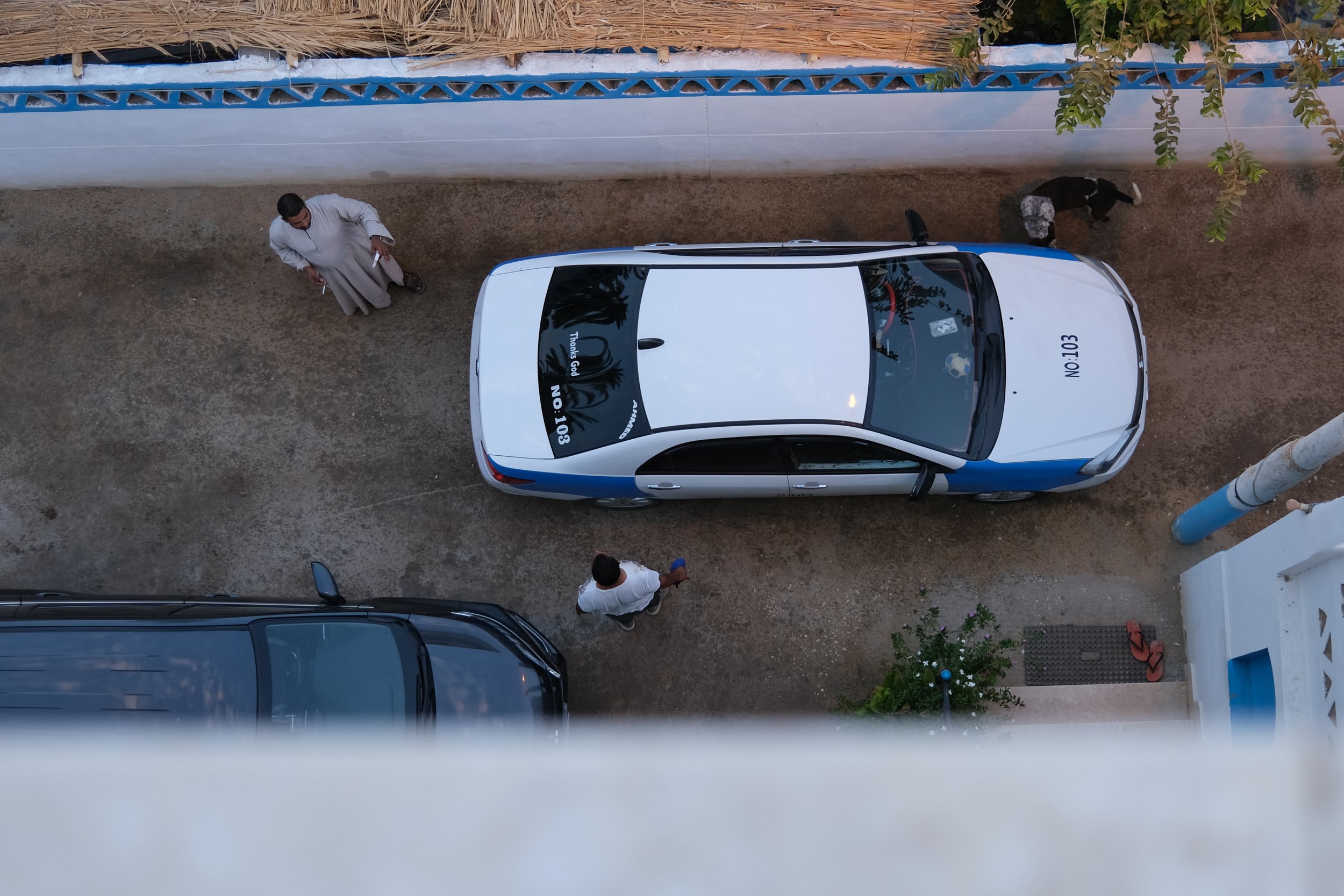Trip Report - Egypt
Our Trip & Itinerary
We only spent 8 and ½ days in Egypt, not nearly enough time to see everything that this amazing country has to offer, but we were able to hit the highlights and spend a bit more time at a couple of places we really enjoyed. We started our trip in Cairo, we stayed out in Giza by the pyramids, but explored the historic inner-city during our time here as well. We left Cairo via the overnight train along the Nile to Aswan, and even though we only had one night here, we were able to squeeze in the area’s highlights, including a short day trip to Abu Simbel. From there we took the train back up to Luxor and spent the last 3 days of our trip soaking up the incredible temples and tombs that surround the current reincarnation of the ancient capital city of Thebes. While we were able to see most of what we came to Egypt for in 8 days, we recommend spending as much time as you can here, there’s simply too much to explore!
Cairo
Landing in Cairo we were introduced to the absolute chaos that is Egypt before even getting through immigration. Stepping into the immense arrivals hall we found a web of banks selling arrival visas to any and all foreigners who came to their window. The special line for diplomats and crew was transformed into the special line for anyone who could pay an attendant to usher them through immigration at top speed. Attaching ourselves to the end of a tour group that had taken advantage of this loophole, we snuck our way through the diplomatic line, and swiftly reached another sea of madness, the exit-door-taxi-driver rodeo. Dozens of drivers immediately called out to us, promising better prices or a faster route than Uber we’d booked, warning us about the poor state of non-taxi vehicles in Egypt. Remembering what we’d read online before arriving, we tried our best to ignore all of the noise and locate our Uber driver who would be arriving in his beat up old Nissan at any moment. Once “safely” in his tattered vehicle we thought the madness was over, but our respite was only temporary. As soon as we left the airport and entered the highway we were abruptly introduced to a new, more exhilarating type of chaos: Cairo traffic. Allow us to paint a picture, you’re driving in a city of 22 million people, down a smooth, wide-open four lane freeway at night. Now as you imagine this, ask yourself; Does your car have seatbelts? Are there any street signs? Are your lights on? Do you have enough space between your car and the one on either side? Are there only motorized vehicles on the road? Do buses pull over to the side of the road before letting passengers on or off? Is every driver above the legal driving age? If you answered ‘no’ to all of those questions, you’ve made it to Cairo! On every road we took to reach our hotel, there were twice as many vehicles driving next to each other as there were lanes, pedestrians were weaving through traffic to cross the road, headlights were only used over speedbumps, and we saw more horse drawn carts here than in the Amish country of rural Pennsylvania. It was like watching a flashmob of interpretive dance – outwardly it’s absolute insanity, but somehow everyone knows their part. This odd ‘dance’ is accompanied by the symphony of honking that constantly fills the air, as drivers maneuver through parked cars, haphazard pedestrians, wayward horses, and frequent traffic control stops.
Jumping from our car and stopping to kiss the sweet, sweet ground on the way into our hotel, we hastily settled into our room for a short night’s sleep. We decided to hire a driver-guide duo for our first day in Egypt with the hope of leveraging their local knowledge and wanting to maximize our time to explore the city’s great monuments with a 5:30 wake up. On our first day, we would try to visit Dahshur, Saqqara, and the Giza pyramids, following the evolution of pyramid building and Egyptian burial practices as we went. We typically prefer to research a place on our own and guide ourselves around a site, but with so much information to absorb and likely a lack of signage, we thought it best to hire an expert. Oh, how wrong we were. Perhaps, if we had actually hired a professional we would have gotten our money’s worth, but to our surprise we had actually hired a grifter instead. Over our eight-hour day, we only spent around two hours exploring Egypt’s ancient wonders. In that short time, we were able to go into two pyramids, walk around one old tomb, and get some cheesy pictures of the both of us in Giza, but we left so much more unseen. A far larger chunk of our time, around four hours, was spent in various tourist traps, trying to separate us from the cash in our wallets. We first went to a carpet factory, employing children who received a modest amount of schooling in return for their hours of labor, an unsettling and oddly justified reality in this part of the world. After feeling icky here, we were taken to an “ancient” Egyptian oil perfumery (loaded with tourists, of course), and then to a papyrus paper factory to listen to yet another spiel about so-called tradition. Our final unrequested stop was at a spice and tea shop, all because we had asked where to purchase some good dates. We were first shown dozens of spices and teas that we weren’t interested in, and then when we finally moved on to the dates, which were fine at best, we were told they were $70 per box! Fed up and feeling cheated, we got up from the couch mid-conversation and told our driver we were finished with this place, whether or not our “guide” was coming. Completely disappointed with how the day had turned out, we returned to our hotel and had many stern words with the hotel tour coordinator. Now you may be thinking, why didn’t we simply tell our “guide” we weren’t interested in these stops and insist on spending our time at the actual historic sites? Believe us, we tried, but felt limited to trusting their knowledge. After all, this is their land and their supposed expertise is why we hired them in the first place. Fun Fact: It turns out that guides have family members all over the city and will deliberately stop at businesses in the family to make everyone an extra buck. Sneaky, sneaky!
Feeling dissatisfied with our first day in Egypt, we swore that our final two days in Cairo would be different. No more guides, no more tourist traps; only exploring the sites and experiencing the local culture. With that in mind, we whispered some profanities at the hotel’s tour coordinator on our way out in the morning and took a chaotic cab, through the morning’s commute havoc, to the Citadel of Salah al-Din al-Ayyubi. Construction at the Citadel started in the late 12th century and continued in various areas through the mid 1800’s, when the Egyptian government stopped occupying it in favor of their new offices in central Cairo. Walking through the walled streets leading up to and within the Citadel, it’s immediately obvious that this fortress was built to withstand and repel any large attack. Yet the two most impressive structures inside the fortress are symbols of peace, harmony, and religion – the mosques of Mohammed Ali and al-Nasir Mohammed. The mosque of al-Nasir Mohammed was built first in 1318, and although there have been several periods of renovation, only a few of the original decorations remain within the open-air mosque. Just behind al-Nasir, the mosque of Mohammed Ali was finished in 1857 and is the largest example of Ottoman Islamic architecture in the city. Walking into the mosque really feels like stepping into a smaller version of the Hagia Sophia in Istanbul. The grand hall is lined with alabaster stone, and lit with hundreds of glass candle holders, though these have been modernized to bulbs. Domed cupolas increase in height as you walk towards the center of the room, until you're standing at the heart of the impressive chandelier, the highest cupola rising 52 meters above your head. The space is quite imposing and demands your attention more than any other building within the Citadel, plus it offers great views over all of central Cairo. Leaving this mosque, we didn’t spend much more of our time at the Citadel, as the police and military museums are rather dull and dusty. Instead, we made our way back to the main highway and called another Uber towards more unique religious sites, starting with Aqsunqur Mosque. Also known as the Blue Mosque, this inconspicuous space is tucked away in a sidestreet and rarely visited by tourists. How did we know that it wasn’t the most popular spot? First, our Uber driver had no idea how to get there and wedged his car between two buildings in an effort to avoid roadworks. Second, every step we took down the small streets towards Aqsunqur drew the gaze of any local who happened to spot us rather lanky foreigners. When we reached our destination, we quickly ducked inside and found we were the only ones here. An older man who proudly maintains the mosque greeted us and brought us to a side room that he unlocked for us, for a small fee of course. The tomb of Ibrahim Agha al-Mustahfizan, the inspiration for the mosque’s name, is encased with beautiful blue tiles and features a single blue stained glass window to let in the only light. These tiles once surrounded the entire inner courtyard of the mosque, but most have been lost in the last 500 years. After our hidden spot, we headed for the last mosque on our religious exploration list: Al-Rifa’i. The monstrous mosque was built at the foot of the Cairo Citadel and is much newer than any of the other significant monuments in Cairo, only finished in 1912. It was intended to be used as the burial mosque for the founder of modern Egypt’s family, Mohammed Ali, but is now home to many other mausoleums. Surprisingly, this includes the last Shah of Iran and several Sufi mystics. This mosque was absolutely the most impressive we visited all day. Despite the “mosque fatigue” creeping in, we still spent close to an hour there, slowly making our way through many grand rooms. In an effort to learn more without the imminent Google Search, we snuck alongside a tour group. While our suspicious gaze eventually ratted us out, we found ourselves in one of the mausoleums, listening to an intimate chant from one of the locals. Given the high and bowed ceilings, his voice carried hauntingly through the room.
After exhausting our appetite for religious sites, we hopped in another cab and made our way to Al Moez street and its famous market for a change of scenery. We began at the very northern end of the market at the Bab al-Futuh gate, with a short stop for a small bite to eat at Zeeyara Restaurant. The restaurant’s rooftop terrace offered a brief respite from the oppressive midday heat of Cairo, alongside several tasty sharing plates. Feeling refreshed and full, we began our long walk through the market, starting with the tourist section. Al Moez is home to thousands of stalls along the main street and its smaller ancillary alleyways, including the famed Khan el-Khalili souq. While we had to inform many persistent shop owners of our limited backpack space, there were a couple of stores that did catch our attention. Tucked into a back alley we couldn’t possibly find on a map, were a pair of antique shops stuffed to the gills with vintage signs, tools, and accessories from Egypt in the early 20th century. These forgotten heirlooms, mementos, and artifacts formed a clutter of intrigue stacked on wooden shelves that could entertain for hours. Crossing Al Azhar street, we exited the tourist market and entered the first area of the local market. Before making it inside, we were stopped by several locals who tried to point us back to the touristy section, but we politely declined, already feeling the build of excitement that we were going to see something few others would. We continued on our way, first into the fabric market, followed by the appliances and electronics section, and finally, across Ahmed Maher street, into the food market. Each block we moved further south seemed to get more chaotic, a new sight at every corner – the butcher swatting flies from their fresh cuts, young boys selling bread with gap-toothed smiles, and crumpled women tying parsley into neat bundles. Stall owners stopped paying attention to us, avoided luring us into their shops, more concerned with what their repeat customers needed. Children nervously poked their heads around corners, mesmerized by Sarah’s blonde hair and her camera. Walking through this rarely visited part of the market was a much more interesting look at real, on the ground life in Cairo. Egypt is currently struggling economically and the government attempts to hide this reality with flashy new museums and excluding hotels. It goes to show that wandering a little further can give you the opportunity to understand the harsh hustle of an average Egyptian, while highlighting the overpowering vibrancy of their day-to-day life. Men are still catching up over a cup of spiced coffee, children continue to play happily in the streets, and people show genuine appreciation for your curiosity. When we finally reached the end of the market, we left this part of town behind, and went back to Giza as the sun set on a new perspective on Cairo.
We decided to spend our final day in Cairo fixing some of our mistakes from our first day, starting by revisiting the Giza Pyramids. Trying to beat the heat, we set our alarm clocks for early the next morning and arrived at the entrance gate just before opening time at 7. Egypt doesn’t always run on the same time we’re used to and opening hours are loose estimates. Our arrival at 7 seemed to annoy the men working at the gate, who told us the ticket office would open sometime in the next 20 minutes, which ended up being an optimistic guess. Nearly half an hour later, we were first to get our tickets for the day and walked over to the security screening at the gate only for that too to be shut. We had to wait another 10 minutes before they decided to open up and slowly boot up the machines. We only got into the pyramids area at 7:45, late in our books, but perfectly on time in Egyptian standards. We began our day at the Great Sphinx, taking our time with every angle, something our guide gave us all of two minutes for during our prior visit. Walking around to the back of the sphinx, we were pointed through the fence by a mysterious Egyptian man and wandered up the traditional causeway between the Sphinx and the pyramid of Khafre. Walking up the 4700 year old stone road, we had the whole place to ourselves – the entirety of the Great Pyramids of Giza loomed in front of us alone and all of Cairo sprawled behind us. This was the perfect example of why we prefer to do things our way, away from a tour group or a deceptive guide. Even when we reached the pyramid from the east and took a clockwise lap around its base, we had the whole thing to ourselves. We encountered pyramid guards at each corner, who claimed we could climb the pyramid if we wanted, even though they were standing right in front of the “No Climbing” signs. We declined politely and chose to simply marvel at the huge scale of the tomb and the mass of the individual stones that built it. We finally encountered some other visitors when we found the northern corner, but quickly lost them again when we crossed the road into the western cemetery. This huge complex is home to hundreds of mastabas, rectangular tombs for high-ranking officials and important citizens related to Khufu. These mastabas are all decorated with beautiful hieroglyphics and while almost all are closed to visitors, you can still peek into some through metal bars or small ventilation openings. We felt like Indiana Jones, digging our feet into the sand, clamoring up walls to see what lay behind, and staying alert for anyone around the corner. While we thought we were allowed to be there, we accidentally wandered into an active archeological dig when leaving and were escorted beyond the now visible flags in the ground. We finished up our second attempt at the pyramids by eating a late brunch at Khufu’s, a new Mediterranean restaurant inside the park area that has surreal views over the pyramids and all of modern Giza.
Still making up for our botched tour, we made one final stop at The Egyptian Museum in downtown Cairo. While some artifacts and mummies have already been transferred to the brand new Grand Egyptian Museum or the National Museum of Egyptian Culture, we consistently heard this was still the best museum to visit. This older museum, first built in 1902, reminded us of the Natural History Museum in New York or the older Smithsonian museums in Washington D.C. The halls are large and airy, but stuffed absolutely full of artifacts and gently layered with dust. Thousands of small pieces aren’t even labeled and item descriptions are yellowed from over 100 years of guarding them. These ancient labels were primarily little strips of paper, either handwritten or from an old typewriter, with detailed descriptions clearly written by passionate archeologists. The most exciting exhibit for any visitor here is the small room housing the burial masks and accessories of King Tutankhamun. Unfortunately, photography is strictly prohibited here, with several plain clothes officers ready to block any camera or phone at a moment’s notice. While these burial masks are beautiful and captivating, our favorite part of the museum wasn’t any of the special exhibits at all. We were drawn to the side rooms stuffed full of knick knacks that once belonged to the mighty. While the new museums are modern, impressive, and ornate, future visitors will miss out on the charm these quiet, dusty rooms bring.
Aswan & Abu Simbel
We decided to take the slow way down to Aswan from Cairo, so instead of driving to the airport, our cab dropped us off at Cairo’s central train station. Well, actually it dropped us off in the middle of a bustling market right outside of the train station. Weaving our way through the market with our massive backpacks, small daypacks, and several drinking water bottles was no easy feat. No one in the crowd seemed to care about our sweaty criss-crossing and the bus drivers barely knew we existed. Believe me, our lives flashed before our eyes more than once. With over 14 hours of no showering ahead of us, we slammed our bags onto the platform in protest and stood there twiddling our thumbs until our train showed up. Not long after, our new home on wheels arrived. Our room was quite basic with two beds, a sink, and a broken window…it was in pretty desperate need of a clean. We weren’t 100% sure that the sheets had been changed, the floor definitely had not been vacuumed in quite a while, and the dust had started accumulating in some corners of the room to quite a concerning level. Shortly after we left Cairo, our carriage’s conductor brought dinner to our room, and we were immediately thankful for our pre-departure trip to Egyptian McDonald’s. The tray consisted of some gelatenous shredded chicken (or in Sarah’s case, a questionable veggie patty), microwaved rice, sad bread, and one oily muffin. We picked at the assortment of tray snacks for a few minutes, then discreetly put our trays outside our door to avoid seeing the conductor's disappointed face when he picked them up. About an hour or so later, our train stopped on the tracks in the middle of nowhere, which we didn’t really think anything of at first until half an hour went by without moving. We went to investigate the issue, walking back through the train looking for anyone who might know what was happening. Eventually, we came to the cafe car, which really turned out to be a wormhole back to 1970’s Egypt. The car swirled with smoke as a group of men sat playing cards and the old, leathery bartender barely lifted his head when we entered. Still not meeting our gaze, he told us the train was stopped for maintenance and anything we needed could be ordered from our cabin. Understanding that we may not be welcome here, we turned around, stepped back into 2024, and returned to our cabin. As we were settling into bed, the train began to move again and we fell asleep to the gentle rocking of our steel horse trundling south along the Nile.
In the morning, we awoke to another unappetizing meal – this time it was stale pastries served four ways paired with the world’s saddest cup of coffee. Luckily, we arrived in Aswan shortly after our breakfast was delivered, so we abandoned the remnants in our room as we stopped off. Walking into the station, we passed by the front of the train and noticed the army carriage with a complement of soldiers. We learned there was a carriage for the army at both the front and back of the train to protect the passengers from any terrorists or protestors en route. Happy that we were only just learning of this and that they weren’t needed for anything, we turned on our heels and left the company behind. Once out of the station, we fought through the swarm of taxi drivers and eventually found a guy who could take us to our guesthouse in the Nubian Village. As we crossed the river from traditional Aswan to the Nubian Village in a 40 year old Peugeot, the tan buildings were replaced by vibrant colors, intricate patterns, and skillfully painted scenes. We arrived at Kato Waidi Nubian House, and were shown to our room painted in terrific blues, with a traditional arched brick roof to help with heat management during the day. Not wanting to miss out on what Aswan has to offer, we skipped our chance to shower and immediately hired a car to take us to Philae Temple. Now in a more modern vehicle, we were driven down to the Aswan Low Dam Lake, where the next Egyptian took us the rest of the way to Agilkia Island in his dahabiya. The island has been the home of several monuments that were re-constructed on Philae Island since the 1970s, as they had to be moved due to frequent flooding and the planned increase in height of the Aswan Low Dam Lake. During the move, the temples were separated into 40,000 pieces and moved to the current island, 500 meters higher than before. The main temple is dedicated to the god Isis and is decorated with huge external hieroglyphics, beautiful carvings, and carved reliefs of the goddess Hathor. While the painted reliefs have unfortunately not survived well here, the multitude of monuments – from the final Pharaohs to the first Caesars – provides an amazing look at the transition of Egypt through several different eras. Besides the two main traditional Egyptian temples there are Roman columns and gates, as well as early Christian markings and prayer elements. Philae is also the home of the final known hieroglyphic inscription. Nestled in a small, nondescript corner of one of the temples, it was written in 394 AD and marked one of the final steps towards the end of traditional Egyptian culture, almost 750 years after the final Egyptian Pharaoh fell.
Returning from Philae we finally refreshed ourselves after our long travel and exploration day, then set out to explore the Nubian Village as the sun began to sink towards the horizon. We walked much further than many tourists normally go, saying hello to surprise locals, taking in the fascinating differences of this community that straddles Egypt and Sudan. The people are very different to others we’ve met across Egypt – not nearly as pushy as the people we met in Cairo and far friendlier to the odd tourist who visits their home. We decided to eat dinner at Kerma Nubian House, a cousin to our hotel, Kato Waidi. The whole building was beautifully painted and full of playfully decorated nooks. When we walked up to their patio, we realized we were the only ones there, which can sometimes be a worrying sign when choosing a restaurant. Our worries disappeared after we ordered, as we watched the kitchen make our entire meal fresh from scratch. From our table high above the Nile, we watched camel riders going through town, children playing football on the road, and heard the evening's call to prayer as we enjoyed our traditional Nubian dinner. While we were tempted to keep exploring after dinner as the evening cooled, we decided to hurry to bed to be fresh for our insanely early wake up time the next morning.
To get to Abu Simbel at a reasonable hour from Aswan, you have to be ready to wake up long before the sun does…at the excruciating time of 3:45 am. This sounds ridiculous, but the road to the monuments is blocked off through the night until it opens again at 5 am. Luckily we had a comfortable, air-conditioned SUV for the drive, and both of us were asleep again before we even hit the highway. Around 6:30 our driver woke us up, asking if we wanted any coffee from a small roadside rest stop. We slowly opened our tired eyes to see we had suddenly been transported to Tatooine. The thin road we were driving on was surrounded by a sea of Saharan sand, a few small rocky outcroppings, and endless miles of open sky. As the sun rose over the Egyptian desert, our car parked in front of the only building in sight: a traditional Nubian house made from mud bricks to blend into the landscape and ventilated domed roofs. We weren’t really ready for a morning coffee yet, but this cafe did have something to grab our attention. The second we opened our doors, we were ambushed by two dogs and their new litter of puppies, still small enough to hold completely in two hands. To our despair, we had to politely decline when the owner offered us the pick of the litter…our travel itinerary isn’t exactly cut out for a squirmy puppy. Still desperate for a bit more sleep we got back into our car and were soon dreaming of what was to come.
We finally arrived at Abu Simbel around 8 am, picked up our tickets from the small, semi-opened ticket office and set off to find the temples. The Temples of Ramesses II and Hathor & Nefertari both sit on the edge of Lake Nasser, but these huge temples weren’t always where they rest today. They were originally carved into the stone by Pharaoh Ramesses II, just 65 meters lower and 200 meters further east of where they can be viewed today. Incredibly, to save the temples from being consumed by the rising lake water in 1966, archeologists and a specialized construction crew cut the temples into 2,000 twenty ton pieces, carefully moved them, and re-assembled them in their present location. If no one tells you this though, you would be hard-pressed to notice that they haven’t been here since the dawn of time. The careful work these crews did almost 60 years ago is simply incredible, and it saved two amazing structures from certain doom in the name of national progress. The great temple of Ramesses II, is guarded by four twenty meter carvings of the Pharaoh. Entering the main hall, there are eight more statues of his Highness, all standing at attention for anyone who enters. The temple is laid out in a traditional triangular shape, with rooms decreasing in size from front to back. Each of the dozen rooms is full of incredible hieroglyphics painted in bright colors that remain surprisingly vibrant over 3,400 years later. These depict the pharaoh’s many war victories and the highlights of his reign, including his most beloved wife, Nefertari. Opposite the temple for Ramesses II, sits the temple for his wife and for Hathor, the goddess of women, fertility, and love. Although this temple is much smaller it still hints at Nefertari’s greatness, the detailed hieroglyphics here pay tribute to the iconic woman of her time. The main hall has no statues, but instead has columns decorated with the face of Nefertari. The rooms are arranged in the same manner as the main temple, but smaller, and without some of the grandiose storytelling that you see in Ramesses’s temple. Unfortunately, because Abu Simbel is such a draw for tourists visiting this part of Egypt, our time here was very crowded. Even though we had braved the early morning hours to start our day, the grounds were packed with hundreds of foreigners by the time we left, many of whom showed no respect for simple rules to protect these monuments. On our drive back to Aswan, we had a chance to watch the desert roll by in an expanse of beige. The vast distance between these two towns is almost entirely covered by the Sahara desert, with only this one road to mark that civilization exists in this corner of the world.
Luxor
Arriving back into Aswan, we hustled to the train station to catch an afternoon ride up to Luxor. Here, we were given two options, the 4th class train maybe with A/C in one hour, or the 2nd class faster train in 2 hours. We chose to take the 2nd class train and wait it out, but this was our big mistake of the day. The 4th class train came and went while we sat in the sun, with perfectly fine A/C might I add, until our “faster” train showed up about 30 minutes later. We departed exactly on time, but things quickly devolved into chaos from there. Our journey involved a series of delays, thanks to a broken train ahead. On board, we began to feel trapped in the Pandora’s Box that was our train carriage. The door between our car and the smoking area had been jammed open, letting in great wafts of cigarette smoke and inviting the occasional passerby to battle the door. Leading into the weekend, a platoon of young army boys occupied the carriage and fought over empty seats at each stop in fiery Arabic. People watched videos on full volume, took their shoes off to air out their hairy feet, and children loudly munched on smelly falafel sandwiches – pure insanity. About an hour after our scheduled arrival, we finally made it into Luxor and hurried off of the nightmare train. Sadly, our late arrival meant we didn’t have time for any cultural exploration on our first day in Luxor, instead we had a lovely Italian dinner at Pizza Roma. Setting our sights on Karnak for the next day, we headed back to the hotel and slipped into a pillowy slumber.
Karnak is an incredibly popular tourist spot, second only behind the Giza pyramids, and it was by far the most densely crowded monument we visited during our entire time in Egypt. Once you enter the temple complex, it’s easy to understand why so many people make the trip to Luxor to visit this place. The massive grounds are actually made up of four unique precincts, but only one is open to the public as of 2024: Amun-Ra. This precinct was built over thousands of years into what visitors see today, and while many areas remain semi-closed, or unrestored, there’s enough standing to take up a whole day’s exploration. Walking through the ten huge pylons that serve as the monument’s gate, the importance of this place of worship became clear. Their size is only overshadowed once you reach the Great Hypostyle Hall, which boasts an impressive size, especially compared to similar sites around Egypt. The roof of the hall is held up by 134 huge papyrus columns across 16 rows, reaching heights of 10 meters. These columns feature reliefs of their builders, Seti I and Ramesses II, in battle and performing religious rituals. We found ourselves drawn to these unique paintings, as their colors have remained since ancient times, telling the stories of a civilization that we can only imagine now. Trying to beat the heat, we limited our visit to the Karnak and clambered back into our barely functional taxi to drive along the Avenue of Sphinxes to Luxor Temple. This temple is connected to the Karnak complex by a 2.7 kilometer avenue of sphinxes and is much smaller compared to the precincts within Karnak. This temple has been an active religious site for over 4,000 years and has gone through a metamorphosis through the years – from a holy place during the 12th Egyptian Dynasty, to a Roman church in 395 CE, and finally to a mosque (now atop the old church) in 1200 CE that is still in use to this day. Unlike other Egyptian temples, Luxor was not dedicated to one god or deified pharaoh, but instead pays tribute to the rebirth of kings. Many scholars now believe pharaohs may have actually been crowned here, and it is where Alexander the Great claimed to receive the pharaoh’s crown of Egypt in 332 BCE. Apparently, it is also where the Roman government in southern Egypt was once based, evidenced by the old hieroglyphics that were plastered over by the Romans to overlay with depictions of the emperor and high officials. When visited together, Luxor and Karnak offer an amazing view into how Egyptian temples evolved and adapted to the changing times.
Apart from the Luxor temples, the Valley of the Kings is a main draw for visitors. We spent two mornings exploring nine of the incredible tombs in the Valley, each varying in detail, design, and preservation. Smaller, more sparsely painted tombs like King Tutankhamon’s demonstrated the haste at which they were constructed, while others, like the grandiose, multi-level, intricately painted shrine of Pharaoh Seti I paid homage to his greatness. It would take at least three days to see all of the tombs, as one-day tickets are limited to three standard tombs and some require additional tickets. Each of the nine tombs we entered over two days was spectacular for its own unique reason, whether that was painted halls, stone sarcophagi, unfinished rooms, or an intact mummy. Even though they’re all different in their own right, recounting each one would be repetitive on paper. Instead, we’ll try to paint a picture of our favorite tomb: Seti I. This burial chamber is the most expensive of the supplemental tombs, with one ticket costing 1,800 Egyptian Pounds, or $36 in August of 2024. One benefit of this high price tag is that very few tourists choose to visit this tomb, so we had the whole space to ourselves! We were also given an exclusive tour by the tomb guardian, Sa’id, who politely declined our tip at the end. Despite the bare entrance hall, the tomb opened up to 17 rooms, each intricately decorated with huge reliefs of Seti I, various gods, or scenes from the Book of the Dead. The paintings here have been preserved remarkably well, especially considering that Giovanni Belzoni, the archaeologist who discovered the tomb, had removed some frescos to bring back to Europe. The tomb gently moves further underground through four hallways separated by beautiful chambers that progress in their level of detail as you advance. One of the most interesting rooms is located off of the second chamber. The pillars here were never totally finished, leaving the mural reliefs on the support pillars in various stages of being sketched out, refined, carved, or painted. It offers a complete look at how ancient Egyptian builders created these tombs from start to finish. Without question though, the burial chamber is the most impressive with its vaulted ceiling and details an immense painting of the Book of the Heavens. The ceiling is painted in rich cobalt, still bursting with vibrancy thousands of years later. We spent almost half an hour in this tomb, marveling at the unexpected details and intricate scenes that look like they were painted yesterday. So, get ready to pay that extra fee because Seti I’s craftsmen really made the visit worthwhile!
Here is our subjective ranking of all of the tombs we visited, based on their level of intricacy, extent of preservation, and how unique they were:
Seti I
Ramesses V & VI
Tutankhamon
Merenptah
Ramesses IX
Tausert & Setnakht
Siptah
Ramesses III
Ramesses IV
To visit the Valley of the Kings at our leisure, we moved across the Nile to its western bank for our last two nights in Egypt. On the recommendation of a family friend, we stayed at Villa Rebecca, a small homestay with spacious guest apartments just a few houses back from the Nile. The property is embraced by green plots of banana fields and the quiet hum of the village. Each morning, Mahmoud carefully prepared a breakfast spread that we sleepily ate as the sun rose over the Nile. The sights were dreamy – the hues of the sunrise painted the river as flocks of herons slipped out of the greenery and flew towards the horizon, where hot air balloons decorated the sky. Ali, who owns the property with his brother Ahmed, was happy to drive us to any of the monuments we were interested in, all for a very reasonable fee. We’ve stayed at some pretty incredible hotels and AirBnBs, but we have rarely felt this level of hospitality and peace. Outside our lovely accommodation, we found the west bank of Luxor to be endlessly charming – filled with interesting, open people who were happy just to say hello or wave as we passed. Here, we didn’t feel the aggressive tactics others had employed to eat at their restaurant, take a ride on their boat, or hire them as our driver. Instead we were surrounded by a true community full of unique characters, like the charming old man who walked the neighborhood every night to turn on each streetlight with his walking stick, or the group of curious children who walked with us at sunset. We also met a Canadian woman named Roxy, who is creating a safe and educational space for girls in the village. We were walking into town for dinner one night, when she waved us over from down the road. She introduced us to the women and girls who have already begun to eagerly attend her English lessons and are learning crafting skills from other ladies in the village. Down the line, Roxy hopes to open a women-only cafe and a shop that sells handmade products at a fair price. We ended each evening on the less popular bank by enjoying dinner at Thebes, right on the edge of the Nile. While most tourists opt for larger hotels on the east bank, we found the west bank to be a far more enjoyable and welcoming place to be. The village and the family at Villa Rebecca made us feel utterly at home and like we truly got to know the people, places, and magic of Luxor.
While much less known than the Valley of the Kings, the Tombs of the Nobles offer a different look into ancient Egyptian society. Instead of hieroglyphic descriptions of battles and managing the affairs of state, these tombs showcase the lives of more ordinary ancient Egyptians. The most amazing part of visiting the Tombs of the Nobles is that you’re almost guaranteed to have the whole place to yourself. On the morning we went, across dozens of accessible tombs, we saw only two other tourists! While visiting the hills that house these underground treasures, we were guided into five tombs, each one completely different from the others. The tomb of Amenemopet featured several statues of the owner and his wife, while the tomb of Ramoses opened into a forecourt held up by massive papyrus columns. The chambers of Rekhmire and Sennefer were by far the most impressive and unique, even compared to those of the pharaohs in the Valley of the Kings. We first visited the Mortuary Chapel of Rekhmire, Vizier to Thutmose III. The chapel is laid out in a triangle, similar to many Egyptian temples, but has only three adjacent halls and lacks a burial chamber, as the Vizier was buried elsewhere. The two side halls have extensive paintings depicting exotic animals, natural resources, and visitors of the Vizier. Included within these paintings is a full description of the responsibilities of a Vizier, important as this is the only known example of such an explanation. The main hall further explains the life of high officials with directions for properly provisioning the chapel, industries overseen by Rekhmire, and many familial scenes. Later, we moved on to the final tomb we would visit: Sennefer. When researching the Tombs of the Nobles, almost every recommendation pointed to this small tomb for its beauty, even rivaling some of the tombs found in the Valley of the Kings. Getting to the tomb is a little bit more difficult, as visitors have to scale a long, steep, cramped tunnel that is not tall enough to stand it. Sennefer’s tomb is often referred to as the “Tomb of the Vineyards”, as almost the entire ceiling is painted with a web of vines and grape bunches. What’s especially incredible about this space is that the whole tomb looks as if it was painted just last week, with almost no significant damage to the ancient art. Sennefer’s tomb consists of only two main rooms, the small entry space and a slightly larger Capella held up by four carved columns. The entire space is painted in terrific detail, with many motifs of Sennefer and his wife, Sentnay. These scenes depict her in equal size, a very uncommon characteristic of Egyptian tombs, showing the undying love he had for his only wife. While we knew we would need to leave for the airport soon, we took our time to take in this hidden, exquisite tomb.
Here is our subjective ranking of all of the tombs we visited, based on their level of intricacy, extent of preservation, and how unique they were:
Sennefer
Rekhmire
Ramoses
Amenemopet
Userhat
Recommendations
Where We Stayed:
Cairo [Giza]
Aswan
Luxor
Some of Our Other Favorite Restaurants:




